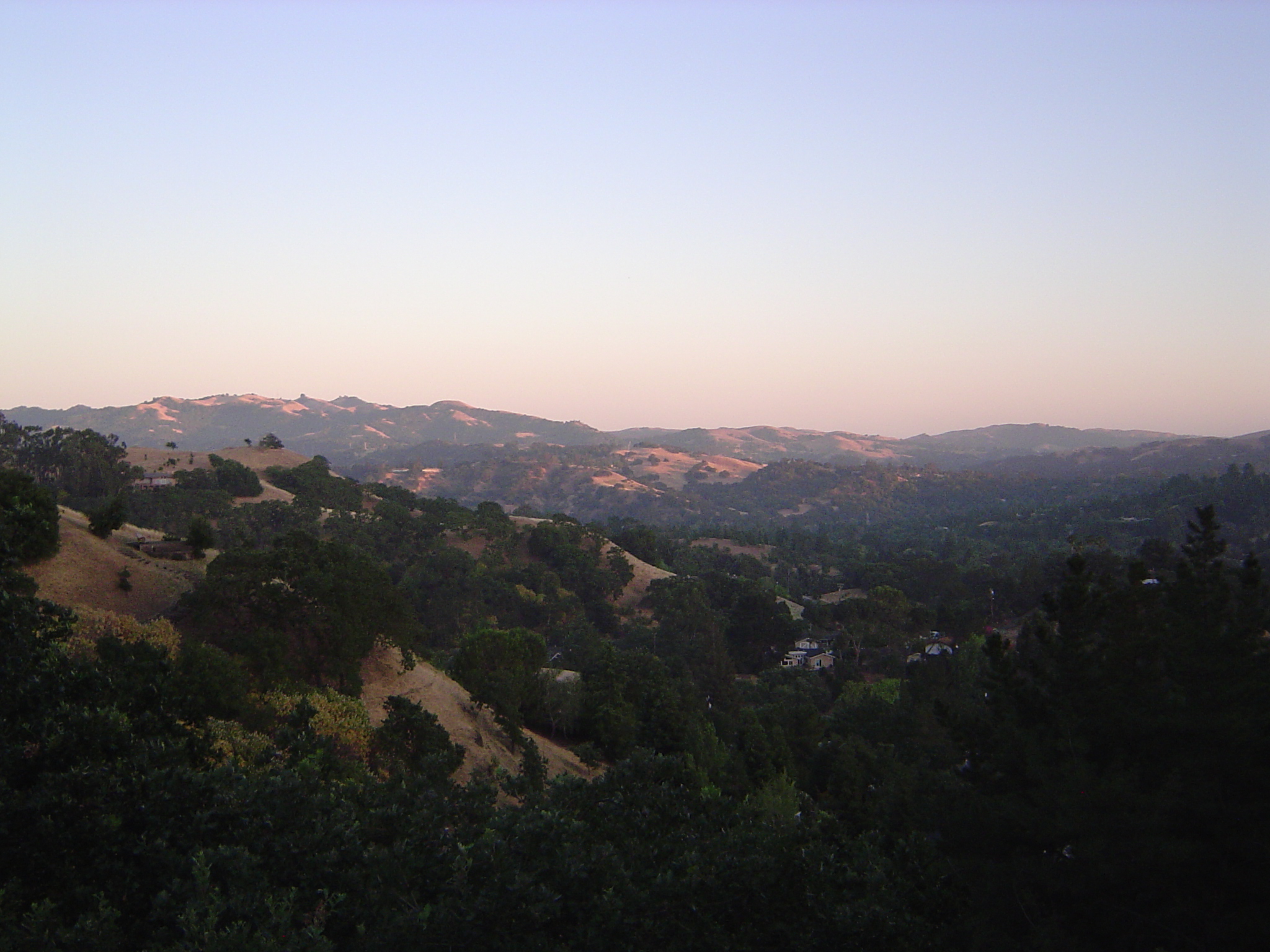Located in Northern California’s East Bay, the city of Lafayette’s downtown main thoroughfare was plagued by decades of neglect and deterioration that was finally reinvigorated through art. The Lafayette Street Pole Banner program was developed in 2002 to feature the city’s economic development through art and design and bring a cohesive look to the city’s downtown grid.
The community developed haphazardly along a three-mile stretch of Mt. Diablo Boulevard, an old county road that served as the main thoroughfare from Oakland to Walnut Creek until the freeway was built. The long strip of road and a century of neglect by county planners had left the then unincorporated community without an urban grid, central core, or focal point. By the mid-1960s, the city’s main street, Mt. Diablo Boulevard, was an undistinguished and heavily traveled strip decorated with gaudy signs, existing shops paying high rent, vacant and boarded up storefronts and a place where pedestrians did not feel comfortable walking. As a result, many restaurants and stores, along with their sales taxes, headed east and west to the nearest city with a mall or vibrant downtown.
Local residents in 1968 finally voted to incorporate the city of Lafayette after two previous attempts failed. In 1995, the city council formed the Lafayette Redevelopment Agency. Both agencies focused on the same goal to transform the downtown into a place of character where residents could shop, dine, participate in public and cultural affairs, and altogether feel good about their town.
The city and the redevelopment agency spent millions of dollars on all varieties of capital improvements including rebuilding a historic plaza; stimulating a transit-oriented mixed use development around the BART station; adding median islands and undergrounding utilities; developing off-street parking facilities; promoting and subsidizing projects that delivered the highest and best uses for their parcels; enacting and enforcing a new sign ordinance. Many blocks that were once blighted now feature new retail developments that keep sales tax revenues local.
Although these improvements helped change the face of Lafayette, they could not alter the fact that it was still cursed by its historic development pattern — the three-mile strip lacking the charm of a small town urban grid.
Redevelopment of downtown Lafayette as an urban grid was never a feasible option because the city was built-out. The challenge became how to embrace and use its linearity to the Lafayette’s advantage. The city’s rolling terrain provides several opportunities for downtown visitors to take long looks down the boulevard. The city realized from the visual arts that people respond to repetition, rhythm, and pattern.
In the 1980s, when drawing up a master street improvement plan for the downtown, Landscape Architect Russ Beatty called for scores of tall ornamental Battery-Park style street lamps to be installed in the median islands along the entire length of the three-mile strip and requested that the lamps be equipped with arms for hanging banners The poles were mostly in place to hang decorative banners by 2002.
Lafayette chose to use the rhythmic and repetitive layout of the poles to mount a year-round graphic art statement. The Lafayette City Council adopted a street pole banner policy that requires that at least 20 identical banner sets be manufactured and hung at any given time, assuring repetition and rhythm. The city council then appointed an all-volunteer Banner Advisory Committee made up of citizens with backgrounds in the arts and economic development to work with a designer to develop and approve distinctive banner themes and designs.
City leaders next engaged Jennifer Morla, a renowned graphic designer, to draw banner designs that, in the spirit of Christo’s Gates or Umbrellas, would use color and repetition to remake the boulevard as a captivating art statement. The Banner Advisory Committee began thinking about how the banners could be used to amplify the city’s growing redevelopment and economic development efforts. The committee selected themes that emphasized Lafayette’s strengths — the excellent schools; the local reservoir with its distinctive tower; the burgeoning restaurant scene; and the community’s interest in jazz, chamber music, and theater.
The project presented several design challenges. Banner space is limited to two narrow vertical strips, each 30” wide and 95” long. Because of the bleed through, shadowing, and concerns about color fade, there are only 10 Sunbrella fabric colors available to the designer. Designs can only use three ink colors due to cost and complexity. Morla moved toward simple and bold text-heavy designs with themes reflecting the community’s local activities, and color schemes that played off the seasonal state of the deciduous boulevard street trees. She has now served as the city’s key designer for the project for more than a decade and has developed 13 separate banner designs for Mt. Diablo Boulevard.
Lafayette’s street pole banner program was instantly embraced by the community. Seeing how the repetitive parade of banners along the boulevard added color and life to the strip, the city council ordered that enough banner sets be designed and manufactured to be displayed all year round. The annual cost for design and maintenance of the program is $25,000 — less than two-tenths of 1 percent of the city’s General Fund budget. The result is a year-round miles-long public art installation that changes monthly and which has become one of downtown Lafayette’s key distinguishing features. The city now receives multiple requests each year for information about the program from other communities.
The Lafayette Street Pole Banner program uses art and design to give downtown Lafayette a distinctive identity, promote commerce, and decorate the town with beautiful detail and ornamentation.
[divider] [/divider]





